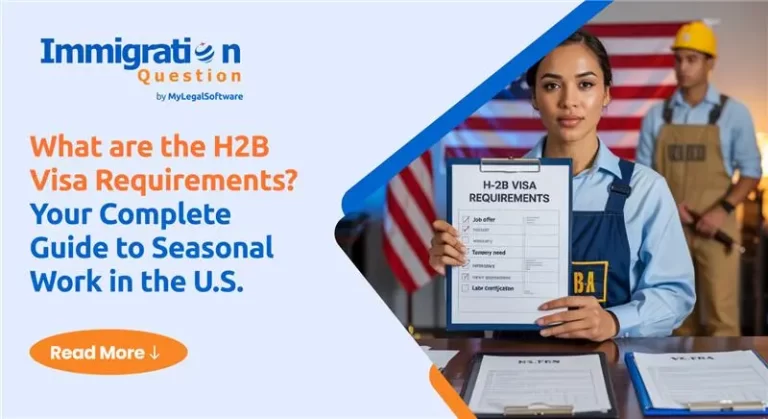If you’re coming to the U.S. on a K-1 fiancée visa, you’re likely in the middle of an exciting (and maybe slightly stressful) chapter of life. The K-1 visa lets you enter the U.S. to marry your American partner—but there’s a strict deadline: you must get married within 90 days of arriving.
So, what happens if the wedding doesn’t happen in time?
In this blog, we’ll walk you through what the 90-day rule really means, what happens if you miss that deadline, the consequences of overstaying, and the possibility of extending the timeline. Whether you’re in the planning stages or running out of time, this guide can help you understand your options and next steps.
What Is the 90-Day Rule on a K-1 Fiancée Visa?
The K-1 fiancée visa is unique in U.S. immigration law. Unlike most visas that allow for longer stays or different purposes, the K-1 has a single objective: to allow foreign fiancés to enter the U.S. specifically to marry their U.S. citizen sponsors.
Understanding the 90-day K-1 rule is essential for anyone on this visa path. This timeframe is written in immigration law as a condition of the visa itself. The 90-day countdown begins the moment you pass through U.S. customs and receive your entry stamp. This date is important because the K-1 visa expiration occurs exactly 90 days later.
The fiancée visa US timeline usually follows these steps:
- Petition filing and approval in the U.S. (4-6 months)
- National Visa Center processing (1-2 months)
- Interview at U.S. embassy abroad
- Entry to the U.S. on an approved K-1 visa
- 90-day period to marry
- Filing for adjustment of status after marriage
There’s a common misconception that you can easily extend this period or that it’s just a suggestion. But in reality, USCIS strictly enforces this timeline because the entire purpose of the K-1 visa is marriage within this specific timeframe.
Got urgent immigration questions? Get reliable answers fast—straight from experienced immigration attorneys. With Immigration Questions, you can ask for free and connect with legal professionals who know how to help.
What Happens If You Don’t Marry on a K-1 Visa?
If you don’t get married within the 90-day window, your visa expires, and your legal status in the U.S. changes immediately. You become “out of status” the day after your 90-day period ends. This means:
- You no longer have legal authorization to remain in the country
- You begin accruing “unlawful presence,” which triggers its own set of consequences
- You can’t legally work or study
- You’re technically subject to removal (deportation) proceedings
- Your record will reflect a visa overstay, which makes future immigration processes much harder.
So, here’s what happens: you risk your legal status and future immigration eligibility.
USCIS and ICE have the authority to take action in these situations, especially if the overstay continues without explanation or resolution. Unlike some other visa types, there’s no grace period after a K-1 visa expires. The 90th day is your final day of lawful status if you haven’t married.
Fiancée Visa Overstay Consequences
Overstaying a K-1 visa can trigger a range of problems depending on how long you remain in the U.S. past your deadline:
Short-term consequences (days to months):
- Immediate unlawful presence
- Inability to adjust status through normal channels
- Risk of detention if encountered by immigration authorities
Medium-term consequences (6 months to 1 year):
- 3-year bar to reentry after 180 days of unlawful presence
- Increased difficulty with future visa applications
- Potential impact on your U.S. citizen fiancé’s ability to sponsor others
Long-term consequences (over 1 year):
- The 10-year bar to reentry after one year of unlawful presence
- Possible permanent ineligibility for certain immigration benefits
Can I Extend K-1 Fiancée Visa Time?
Unfortunately, no. The K-1 visa expiration is fixed. There’s no formal process to extend or renew it, even if you have a good reason for the delay. USCIS doesn’t allow extensions of the 90-day window—it’s part of what makes the K-1 visa unique.
That said, in rare cases where the delay is due to extraordinary events (such as hospitalization or natural disasters), an immigration attorney may be able to help you explore legal workarounds—but those cases are uncommon, and approvals are not guaranteed.
If you’re running out of time and can’t get married in time, you may need to leave the U.S. and start the process again later—or explore other visa options if eligible.
What To Do If You’re Approaching the Deadline
If you’re feeling the pressure of the deadline approaching, you’re not alone—and there are a few things you can do:
- Prioritize a legal marriage ceremony – A simple courthouse wedding counts! You don’t need an elaborate ceremony to satisfy the legal requirement.
- Gather your documentation – Ensure you have all necessary documents for both the marriage license and the subsequent adjustment of the status application.
- Consider expedited marriage processes – Many counties offer same-day marriage licenses and ceremonies to help you meet the deadline.
- Consult an immigration attorney – If unforeseen circumstances are making marriage impossible within the timeframe, get professional advice before your K-1 visa expiration.
- Document any justifying reasons – If there are legitimate reasons for delay, keep detailed records and evidence that might help your case later.
If you’re unsure where to turn, Immigration Question is a great starting point. You can ask real immigration attorneys your questions for free and get answers within hours.
After the K-1 Fiancée Visa Expires: Next Steps
If you’ve already passed the K-1 visa expiration date without marrying, you have limited options:
- Marriage and adjustment with explanation – If you marry after 90 days, you can still file for adjustment of status, but you’ll need to explain the delay and might face additional scrutiny.
- Departure and consular processing – Leaving the U.S. and applying for a spouse visa from abroad is a good option, though prior unlawful presence might create complications.
- Evaluation for other relief – In rare cases, other forms of immigration relief might be available depending on your circumstances.
Each of these paths has significant legal considerations, and outcomes vary widely based on individual situations. The longer you remain in the U.S. after your K-1 visa expires without marrying, the more complicated the situation becomes.
Final Thoughts
The K-1 fiancée visa offers a clear path to U.S. entry and marriage—but it comes with a strict deadline. If you don’t marry within 90 days, your visa expires, and you’re left without legal status. The consequences of overstaying can follow you for years, so you must understand the strictness of the 90-day K-1 rule.
Whether you’re just arriving or facing the final days of your timeline, it’s always best to plan, get married on time, and ask for help if needed. You can ask questions on Immigration Question for free and get answers within hours. We can also connect you with an attorney of your choice in our network of experienced immigration attorneys who can guide you through your options and help you avoid costly mistakes.
Frequently Asked Questions
Can I extend my K-1 visa if we need more time before getting married?
No, there is no formal process to extend the 90-day period. The K-1 visa is specifically designed for marriage within this timeframe.
If I leave the U.S. after my K-1 visa expires without marrying, can I apply for another K-1 visa later?
Yes, in most cases, you can apply for a new K-1 visa in the future, but it may be more difficult. Immigration officials will closely review your previous overstay and may question the intent of your original petition. Approval is not guaranteed, so be ready to explain what happened the first time around.
Is it possible to change my status if I miss the 90-day deadline?
After the deadline, changing status becomes much more complicated and risky. While possible in some cases, it’s not guaranteed and requires detailed legal analysis.
Does a courthouse marriage count, or do we need a formal ceremony to satisfy the K-1 requirements?
A courthouse marriage absolutely counts. USCIS only requires that a legal marriage takes place within the 90-day period—it doesn’t matter whether it’s a large wedding or a small civil ceremony. As long as you have a valid marriage certificate dated within the timeframe, you’re fine.
What documentation proves we married within the required 90-day period?
Your marriage certificate showing the date of marriage is the primary document. Keep copies of your I-94 record showing your entry date to demonstrate the marriage occurred within 90 days.






